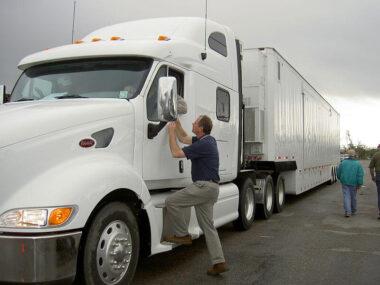If you’ve ever dreamed of moving to Canada, farm jobs may be one of the most realistic ways to make it happen. Agriculture is one of the largest industries in the country, and farmers constantly face labor shortages. To fill the gap, Canada actively recruits foreign workers through visa programs that can lead to permanent residency.
In 2025, Canadian farm jobs typically pay between CAD $16 and $25 per hour, which adds up to $33,000 to $52,000 per year, depending on the province and the type of work. For many foreign workers, that’s not only a steady income but also a stepping stone toward long-term settlement in Canada.
This guide explains which farm jobs are in demand, what salaries you can expect, the visa and immigration pathways available, and how to apply step by step.
How Much Do Farm Workers Earn in Canada?
Let’s talk money first. Salaries depend on the type of farm, the province, and your level of skill.
-
Fruit/vegetable picker: CAD $16–$18/hour
-
Greenhouse worker: CAD $16–$20/hour
-
Livestock farmhand: CAD $18–$22/hour
-
Dairy farm assistant: CAD $18–$23/hour
-
Tractor/equipment operator: CAD $20–$25/hour
That means you can realistically earn $33,000–$52,000 a year if you work full time (40–48 hours per week).
Salary & Cost of Living by Province
| Province | Average Hourly Wage | Annual Salary (40 hrs/week) | Cost of Living (1-bed apt/month) |
|---|---|---|---|
| Ontario | $16–$22 | $33,280–$45,760 | $1,600–$2,000 |
| British Columbia | $17–$23 | $35,360–$47,840 | $1,800–$2,300 |
| Alberta | $18–$25 | $37,440–$52,000 | $1,400–$1,800 |
| Saskatchewan | $16–$21 | $33,280–$43,680 | $1,000–$1,300 |
| Manitoba | $16–$20 | $33,280–$41,600 | $1,100–$1,400 |
Notice how Alberta and Saskatchewan offer higher wages with lower rent compared to Ontario or British Columbia. That makes rural provinces attractive for foreign workers trying to save money.
Jobs in Demand
Canada’s agricultural sector is massive, covering everything from fruit picking to dairy farms. The following roles are consistently in demand:
-
Fruit and vegetable pickers (apples, berries, grapes, tomatoes)
-
Greenhouse workers (flowers, vegetables, herbs)
-
Dairy farm assistants (milking, feeding, barn maintenance)
-
Livestock farmhands (cattle, pigs, poultry)
-
General farm laborers (planting, harvesting, cleaning, packing)
-
Heavy equipment operators (tractors, combines, harvesters)
-
Supervisors and farm managers (with experience)
If you have no experience, don’t worry — many jobs only require you to be physically fit and ready to work outdoors. For equipment or supervisor roles, prior farm work is usually necessary.
Visa and Immigration Pathways
One of the biggest advantages of Canadian farm jobs is that many employers offer visa sponsorship, and in some cases, these jobs can lead to permanent residency (PR).
Here are the main immigration pathways:
1. Temporary Foreign Worker Program (TFWP)
-
Most foreign farm workers come through this program.
-
Employers must get a Labour Market Impact Assessment (LMIA) to prove they need foreign workers.
-
You’ll get a temporary work permit tied to your employer.
-
Contracts usually last 8 months to 2 years.
2. Seasonal Agricultural Worker Program (SAWP)
-
Specifically for workers from countries that have agreements with Canada (e.g., Mexico, Jamaica, Trinidad, Guatemala).
-
Allows you to work in Canada for up to 8 months per year.
-
You can return seasonally, and some workers build long-term relationships with farms.
3. Agri-Food Pilot
-
This is the pathway to permanent residency for farm workers.
-
To qualify, you need at least 1 year of full-time Canadian work experience in eligible farm occupations.
-
Language requirement: CLB level 4 (basic English/French).
-
Education: High school diploma or higher.
-
Job offer must be non-seasonal and in one of the listed industries (meat processing, greenhouse, animal production, etc.).
4. Provincial Nominee Programs (PNPs)
Some provinces have their own farm worker immigration streams. Examples:
-
Ontario Employer Job Offer Stream – In-Demand Skills
-
Saskatchewan Farm Worker Category
-
Alberta Rural Renewal Stream
These programs can nominate you for PR after gaining Canadian work experience.
Benefits of Farm Jobs in Canada
-
Visa sponsorship available — you don’t always need to find a job independently.
-
Housing sometimes provided — especially for seasonal workers (deducted from pay or free).
-
Clear path to PR through the Agri-Food Pilot or PNPs.
-
No advanced education required — even with only high school, you can qualify.
-
Job security — farms always need labor, especially during harvest seasons.
Challenges to Expect
-
Physically demanding work — long hours outdoors, lifting, repetitive tasks.
-
Rural locations — farms are often far from big cities. Social life and access to services can be limited.
-
Seasonal contracts — not all jobs are permanent; some end after harvest.
-
Weather extremes — working in hot summers or freezing Canadian winters.
-
Employer dependency — work permits are often tied to one employer, limiting flexibility.
Step-by-Step Application Guide
Here’s how to apply for a Canadian farm job with visa sponsorship:
Step 1: Find an LMIA-Approved Employer
-
Use the Job Bank Canada website (jobbank.gc.ca) — filter by “LMIA approved.”
-
Check provincial websites for agricultural job postings.
-
Look for recruitment agencies partnered with Canadian farms.
Step 2: Secure a Job Offer
-
The contract should include: job title, wage, location, housing details, and duration.
-
Make sure the salary meets at least the minimum wage of the province.
Step 3: Employer Applies for LMIA
-
The employer proves they need a foreign worker.
-
Once approved, you’ll receive an LMIA confirmation letter.
Step 4: Apply for a Work Permit
-
Submit application online through Immigration, Refugees and Citizenship Canada (IRCC).
-
Required documents:
-
Passport
-
LMIA letter
-
Job offer/contract
-
Proof of funds (to support yourself before first paycheck)
-
Medical exam (if required)
-
Step 5: Wait for Processing
-
Processing times vary — typically 2–4 months.
-
Keep checking IRCC’s online tracker for updates.
Step 6: Travel to Canada
-
On arrival, show your work permit approval letter at the airport.
-
Border services will issue your work permit.
Step 7: Start Work & Plan Long-Term Path
-
Begin your farm job.
-
If you want PR, aim for at least 1 year full-time experience in eligible occupations.
-
Then apply under the Agri-Food Pilot or PNP to secure permanent residency.
Conclusion
Canada’s farm jobs are more than just temporary labor. They can be a gateway to permanent residency, stable income, and a new life in Canada. With salaries ranging from CAD $33,000 to $52,000 per year, visa sponsorship opportunities, and clear PR pathways, farm work is one of the most accessible routes for foreign workers in 2025.
The work is tough, but for those willing to roll up their sleeves, it offers security, growth, and the chance to call Canada home.


